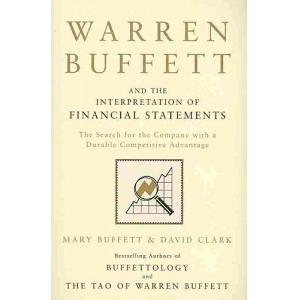Understand various way to grow the business and how growth impacts cash flow, when you are growing a business, lot of times business owners forget to monitor the expenses. When the expenses grow more than your revenues, that’s a big problematic for a business.
Use expense controls to manage
the cash flow and generate operating profits, we want to make sure that as we
are growing a business, we’re managing our expenses and managing our cash flow
so that we can generate increase in profits that is consistent with the
increase in revenue.
Understand how ratios can help to
run a good business, using ratios to help us manage our expenses and our cost
of goods sold which are the expenses that are directly related to the items
that we are selling.
GROWING THE BUSINESS
The problems that grow as you grow your business
- The cash crunch
- Operations issues
- People problems
- Compliance issues
1. The Cash Crunch
The Use of Statement of Cashflows
- Categories of cash flows helps a reader understand the sustainability of a business
- Good if cash flows comes from operations
- If cash is used by operations consistently, business may not be sustainable
Cash flows
Each type of cash transaction is
categorized into three sections, Operations, Investing and Financing
- Operations: net income and and changes in current assets and liabilities
- Investing: purchase or sale of property, plant, equipment, investments, or lending money or receiving payment of money from borrower.
- Financing: cash from shareholders, dividends paid, borrowing from creditors or repayment of funds to creditors
Net cash flows added to beginning
cash should equal ending cash on the balance sheet.
Example – Statement
of Cash Flow
New large contract:
- Great celebration
- Hire people and start working
- Billing 30 – 60 days to get paid
- Must pay employees before cash comes in
Many business owners do not
understand growth and how it impacts cash flow, when we start generating
revenue, having new large contract, we might have great celebration, we get a
lot of revenues in, we hire people and than people start working. The business
owners bill for the revenues and at the same time, the business owner have to
wait to get paid for the billing for the revenue. They have to pay the people
before they are actually going to collect the money that they billed for. This
is something owners of businesses don’t realize it’s going to happen.
Must have sufficient cash to
cover costs prior to receiving revenue, way to do this?
- Sufficient reserves
- Credit line
- Bank loan
- Partner or sale equity
That’s why it’s good to forecast your cash flow just so you can see how the money comes in and the money goes out. The money may go out before the money comes in for the revenue that you’re earning. So particularly in some states, it’s really critical to make sure you pay your employees on a timely basis.
How to deal with this situation?
Emphasize the importance of reserves and need to make sure the owner of businesses have cash to cover their costs that occur prior to getting the revenues, prior to receiving the cash from their’s billing. When we say reserves, let’s say six months of reserves, or at least 2 – 3 months reserves and recommend ideally business owner would save up to six months cash reserves.
What are some alternative ways to
build a business cash reserve for the financial security of business?
- Set a monthly target, when sales are booming, it is best to keep your feet firmly on the ground if you are going to build a cash reserve, take a prudent approach to expenditure, even when the profitability is high and formulate contingency plans to get you through unexpected downturns in business. You can always reinvest when your cash surplus exceeds your targets.
- Start renegotiating your contracts with suppliers, can be an effective way to reduce costs and improve the financial security of a business. Approach the supplier in a positive framework, present a solid case for keeping to current or reduce prices or improving quality. If you approach the supplier in a positive framework, it can help establish trust and rapport, and show that you are willing to work together to find a solution. Explain to vendor why you need to make changes and and what you hope to achieve, listen to the their perspective and concerns, and acknowledge their value and contribution, avoid blaming or accusing your vendor of any wrongdoing. Make sure to thank your vendor for their cooperation and understanding, provide feedback and recognition.
Credit line, credit line can be arranged with good business
banks. The credit lines does cost some money but you don’t need to use it.
Operation issues
Supply chain
- Can you get sufficient product
- Can you hire the right people
- Outsourcing
- Fractional support
- Hiring at a new level
- Restructure the org chart
- Have sufficient infrastructure
- CEO (Chief Executive Officer) – goes at the top of the organization chart, if not you, if you are not good with the detail, and the day to day management of your staff, maybe you want to hire CEO.
- CFO (Chief Finance Officer) – able to provide some operational support and understand the importance of sales
- CIO (Chief Information Officer) – Internal or external – more reliance on technology
- HR – must be competent person – not clerical mindset
- COO (Chief Operation Officer) – ensure product or service provided at the level you promise
- CMO (Chief Marketing Officer) – Bring in the business on an ongoing basis, put processes in place
It could be that you can’t have your fingers on everything all the time, and so best to see if you can pinpoint a person in your organization that can be a COO, Chief Operating Officer, somebody that can manage the regular day to day activities of the business because you’re going to be starting to work on the business and not in the business. If you have somebody that helps with the operations, then that will help you manage the business a little bit better. In operations, whether it’s manufacturing or service, as you grow the business controlling the operations becomes a little more challenging, so putting procedures in place becomes more critical than ever. You need to make sure that you have policies and procedures. Make sure that your managers also look to those policies and procedures as something important in what you do.
Also your supply chain, you need more of product, you need more of supplies than ever. Are you going to be able to get those supplies and are they going to be the quality that you want from your original supplier? That’s always a question when a business is growing, if your suppliers aren’t able to handle you, sometimes you need to change suppliers. Watch for that in running your business and also a right people, particularly in a service business.
Are you hiring the right people
and do you have good processes for hiring the right people? How about to look
at outsourcing as you’re growing. Because there maybe some components of your
business that you can outsource like HR. Fractional CFO, fractional CEO may be
that fast way to start at with ramping up the business.
When you start a business, most
entrepreneurs try to do everything themselves. Understandably so you can’t
afford to hire people to do all of the components of the business. But as grow,
look at what you need to hire and what is the most important component to your
business? For every business its a little bit different, but if you look at and
make an org chart, look at where your deficiencies are, where you’re struggling the most, that’s
the hole you need to fill first.
CFO, that can be an accounting
manager or controller, there are a lot of different terminologies depending
upon the size of the business. But have somebody that can help you with
understanding your financials and make sure that you’re careful on who you hire
and how you manage them. Your CPA can help you with internal controls that are
necessary.
A lot of businesses really need a
COO, Chief Operation Officer, to get started to make sure that the business
operates as it’s supposed to. That you provide whatever product or whatever service
your customers expect at the level that you promise. Because the worst thing
that you can do is not provide the service or product and lose business because
that will start things going in the wrong direction. The CEO is typically the
most diverse higher for a lot of smaller businessess. HR is definitely
something that can be outsourced for a short period of time. Then something
when you get to a certain number of people, 25, 50 you need to bring HR in
house.
CIO, Chief Information Officer,
you have got to be careful about this position and you need again really good
controls because they are working in something that many of us are not familiar
with. Are the firewalls sufficient, or your backups sufficient? Do you have
protection as a business owner?
CMO, Chief Marketing Officer, a
good business owner will need to keep their finger on this sales on a regular
basis, because a good salesperson might be able to steal your business. A good
business owner should make sure that you keep your thumb on the pulse of
revenue.
When you develop your org chart,
the CEO, Chief Operating Officer, goes at the top of the org chart. It may not
be you if you’re not good with the detail and the day to day management of your
staff, maybe you want to hire CEO. Again, not an easy position to fill, so you
might look at hiring a consultant before you actually bring them into your
business. You can try them out before you hire them. But some business owners
literally cannot run their own businessess so they get CEO.
Most people do not effectively
manage more than 5 – 7 direct reports. Good business practice is to break it
down so that one person including yourself, is not managing more that 5-7
direct reports.
Compliance issues
As you grow, state and federal
laws change at different level
- Number of employees
- Amount of revenue
- Tax compliance
Compliance issues change as your
business changes, and this is affecting state and federal laws, so you need to
be aware of what these changes could be. If your number of employees goes from
five employees to 20 employees, you could see some changes in your compliance
requirements. Same with that amount of revenue. If your revenue goes from
500,000 to 1.5 milion, you might have different compliance issues, and same
with tax. You definitely need to be aware of the payment requirements as far as
payroll taxes, income taxes, with other taxes your business may be subjected
to. These are things that your attorney or a CPA can help you with, but your
compliance issues change as your business grows.
Source: cousera







No comments:
Post a Comment